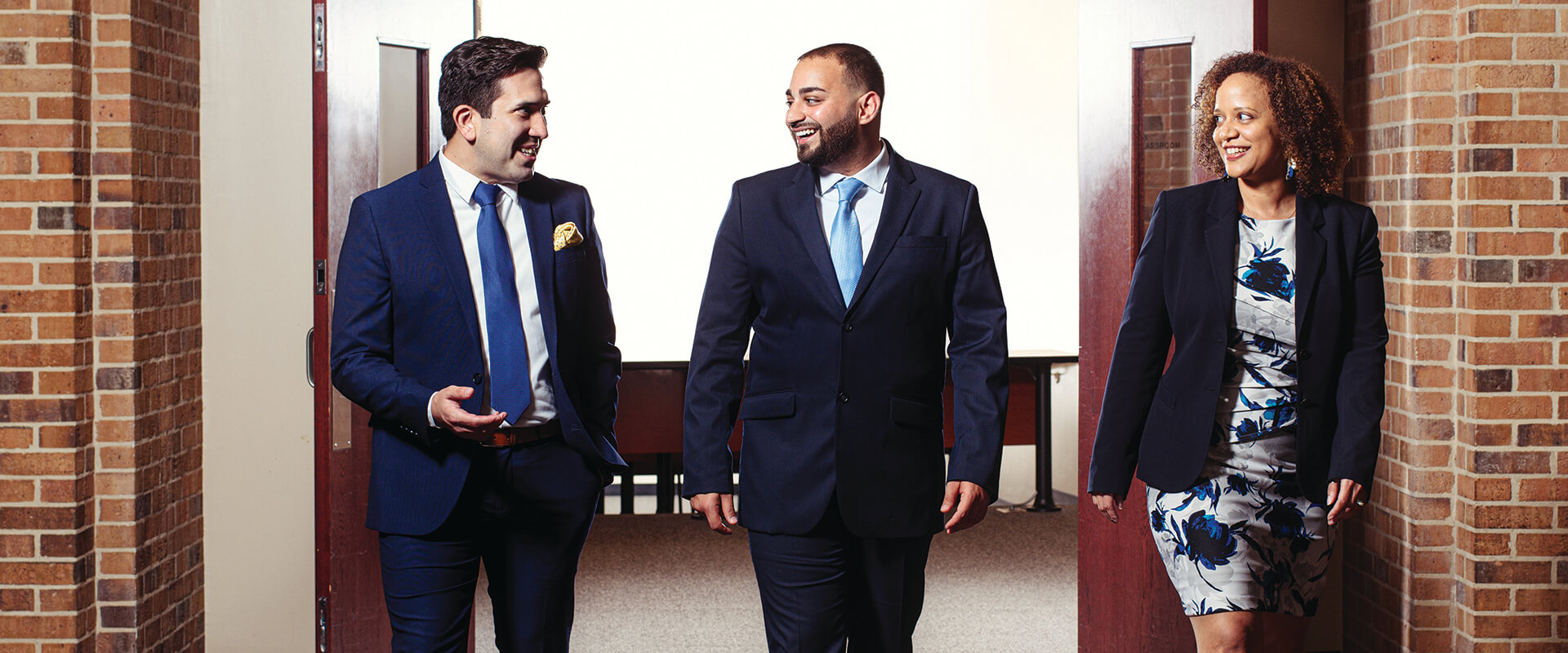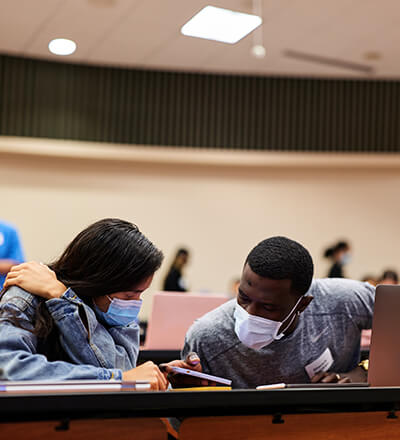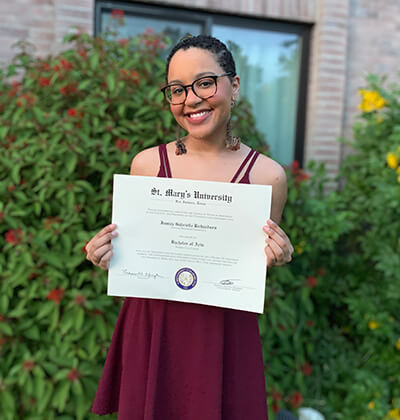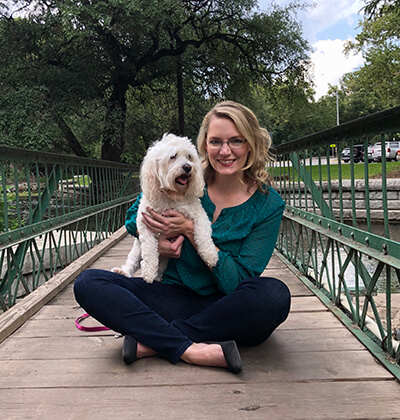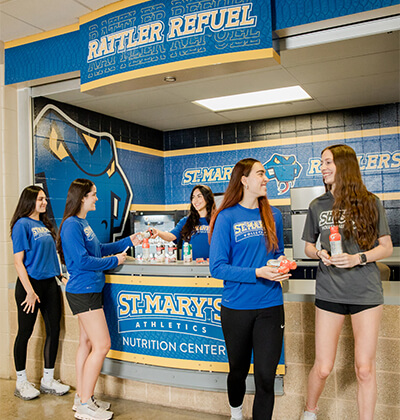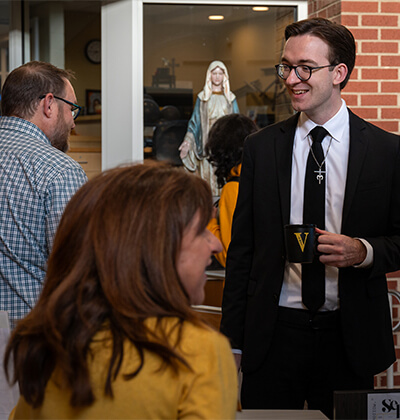Opening the Way
By Frank Garza
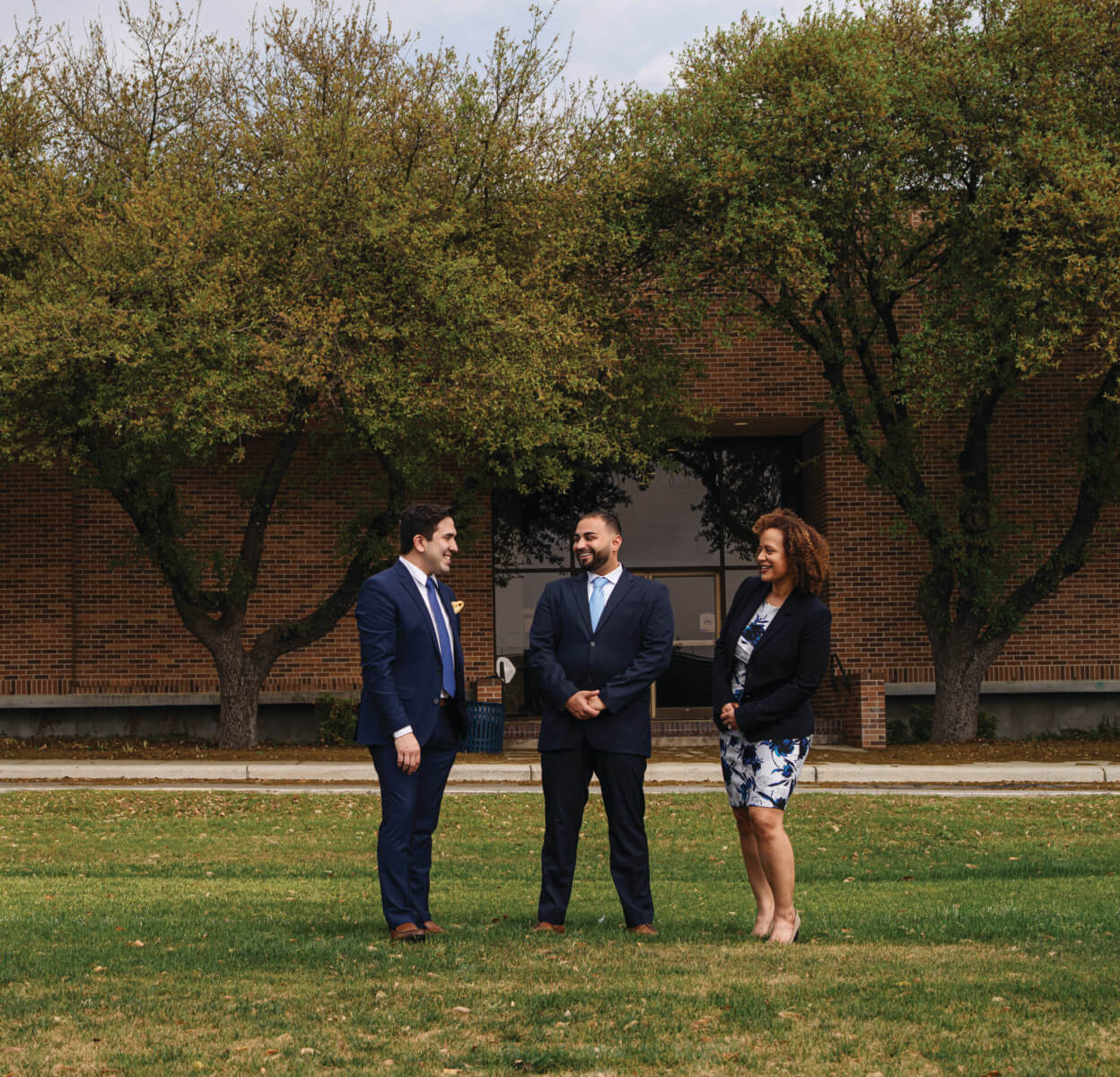
When he first started law school, third-year J.D. student Farid Seyyedi immediately felt the gap between himself and non-first-generation law students.
“But the beautiful thing about St. Mary’s is that they give everybody an opportunity to close that gap quickly, especially with the Mentor Circles Program,” Seyyedi said. “It’s a great opportunity to put your name out there and get to know the legal community.”
Last fall, St. Mary’s University School of Law Dean Patricia Roberts, J.D., led the law school in a new effort to partner with its alumni and the San Antonio Bar Association and connect second- and third-year J.D. students with experienced lawyer mentors. As of Spring 2021, the program had engaged 223 students and 81 mentors. This effort, called the Mentor Circles Program, gives students and experienced lawyers a chance to discuss different practice areas, work settings, real-world ethical dilemmas and career strategies in a confidential, small-group setting.
Sara Dysart (B.A. ’74, J.D. ’81), University Trustee and President of the School of Law’s Board of Visitors, along with Mary Brennan Stich (B.A. ’78, J.D. ’81), a member of the Board of Visitors, also played a vital role in the development of the program.
“As someone who benefited greatly from mentors throughout my education and my career, I was excited about the possibility of offering formal mentorship from attorneys and judges in the community to our second- and third-year students,” Roberts said. “Mentor Circles allow for networking with members of the bench and bar, as well as fellow law students, further expanding a student’s resources and support. Mentor Circles are now part of our tradition.”
Alicia Grant (J.D. ’16), associate at Norton Rose Fulbright and mentor in the program“I wish this was around when I was in law school, because it definitely would have been something I’d have signed up for. It provides space for a student to talk to their mentors, but also to learn from their peers and get guidance on their law school career and just generally.”
Each Mentor Circle pairs two or more lawyers with groups of up to eight students. Each group has a student leader, who coordinates with the mentors on which topics students want to discuss, how the discussion format should look and scheduling meetings. During the pandemic, the groups met at least once a month on Zoom. Topics covered included Things I Wish I Had Known Earlier in My Law Career; Practice Areas, Work Cultures and Career Options; and an anything-goes Q&A session, among others.
David Louis (J.D. ’20), a law clerk for the Texas Supreme Court, said Mentor Circles might prevent students who don’t feel they fit in from dropping out.
“It’s a huge step in the right direction,” Louis said. “We need to lean in more and find other ways to provide mentorship.”
In his circle of budding lawyers, Albert Gutierrez (J.D. ’94) emphasized the sense of community that exists between all
St. Mary’s Law graduates by sharing some advice his cousin, then a third-year J.D. student, gave him during his first semester at St. Mary’s Law.
“We are all in the same boat,” Gutierrez recalled his cousin saying. “We’re perhaps at different levels now, but if you just work hard and stay focused, you’re going to be ok.”
The mentors also learned from the students. Before participating in Mentor Circles, Catherine Hilliard (J.D. ’99) had never heard about imposter syndrome. She understood that some students felt doubts about their ability to practice law, but encouraged them to remember they will have earned their law degree and license.
“An imposter is someone who is trying to be something they’re not,” Hilliard said. “Don’t underestimate the power of that degree and that license because you will be a lawyer.”
By the end of the semester, Eric Michael Garza (M.B.A. ’15, J.D. ’16) wanted to impart a final lesson for his circle: not everyone will see your value. One firm for which Garza worked only graded associates based on years of practice, rather than looking at the number of depositions, for example.
“It doesn’t mean your experience or your value is discredited, it just means that particular firm isn’t placing the same value on it,” Garza said. “You have to decide whether you’re OK with that.”
Mentor Circles also provide students with a sense of what’s waiting beyond law school and the lessons that new lawyers will discover as they progress through their career, said former Texas Supreme Court Justice Paul Green (J.D. ’77).
With his Mentor Circles students, Green recounted an experience from early in his legal career when he defended a personal injury case and learned from it. In the case, the plaintiff claimed she had a number of terrible injuries and was unable to function because of a brain injury. He recalled flying to Portland, Oregon, to get the plaintiff’s deposition, but opted not to do a video deposition. At the trial, the opposing counsel was able to convince the jury of the plaintiff’s claims because Green didn’t have the video deposition showing she was perfectly coherent, and the plaintiff was not present to testify.
“School tries to prepare you for practice, but there’s so much you don’t know. It takes time to get over that,”
Green said.
Third-year J.D. student Elizabeth Pliego said Mentor Circles allowed students to have more in-depth conversations with attorneys compared to at a typical networking event.
Pliego found common ground with one of her mentors last fall, Artessia “Tess” House (B.A. ’04, J.D. ’14), who was also a first-generation student and shared similar legal interests.
“I’d never thought about the idea of opening up my own firm, but she instilled that in me,” Pliego said. “She planted a seed.”
Pliego’s time in the program also reassured her about her decision to become a lawyer.
“They showed me that I could find my happiness in this profession while also helping others,” she said.
Second-year J.D. student Barbra Gazo had no doubt the Mentor Circles Program would be one of her most valuable experiences at St. Mary’s Law. Her circle included prominent San Antonio criminal defense attorney Gerry Goldstein, J.D.
“I saw this as an opportunity to have a one-on-one interaction with some of the profession’s top professionals and learn how they began,” Gazo said.
Seyyedi was the student leader for Gazo’s circle last fall. He said the group ended up meeting twice a month because the students and mentors enjoyed the experience so much.
“The Mentor Circles Program is just one more affirmation that I chose the right school,” Gazo said. “Everyone in the leadership at the law school and in the legal community is just on fire, asking what more they can do.”

